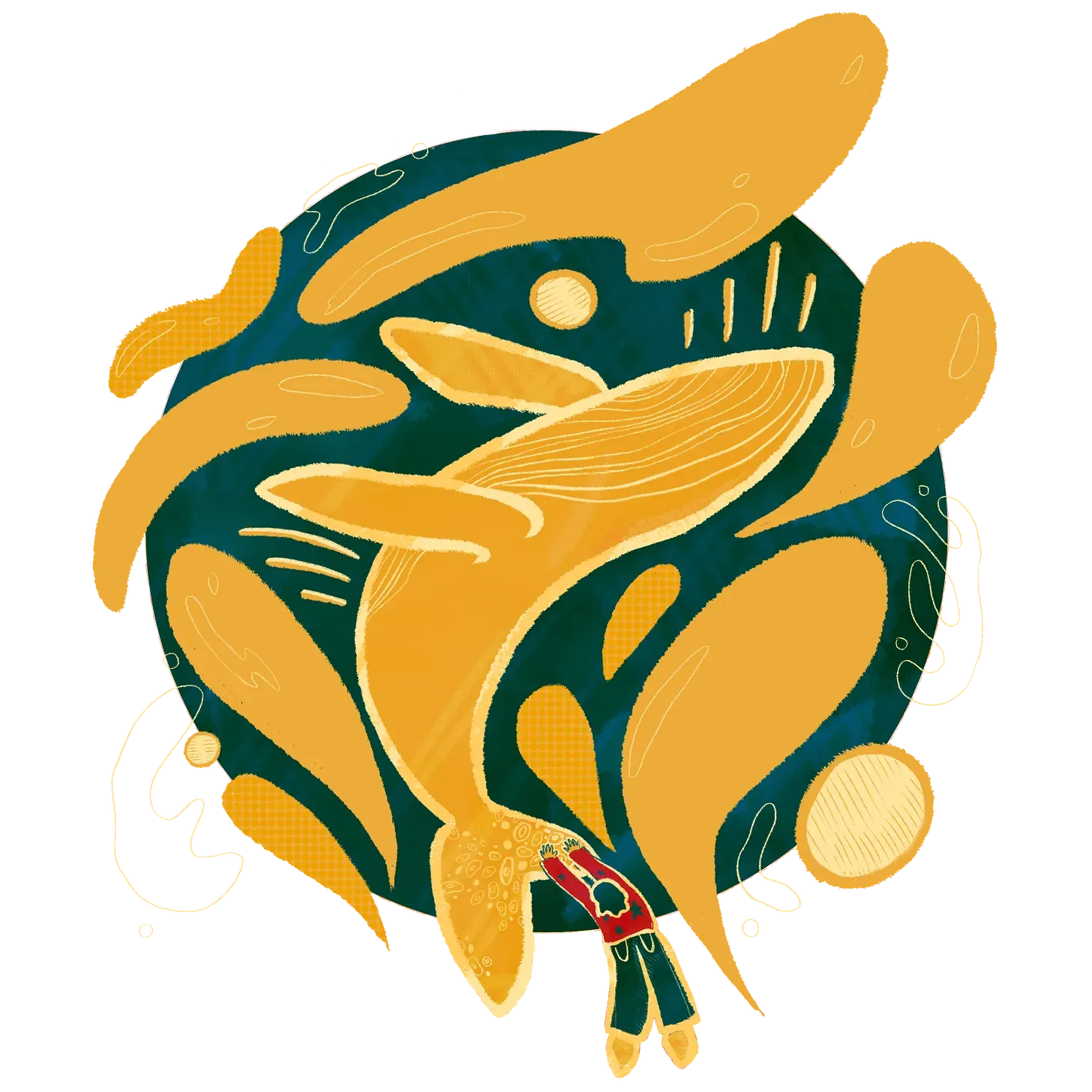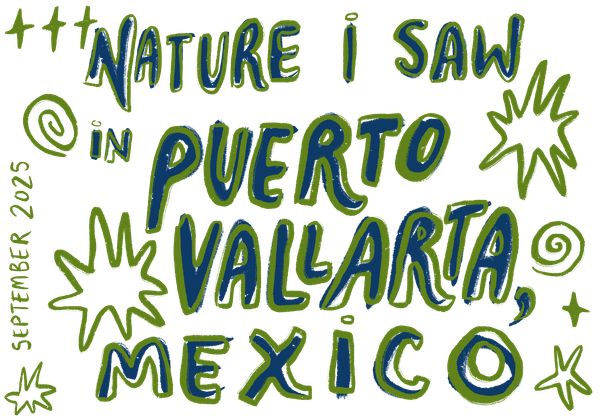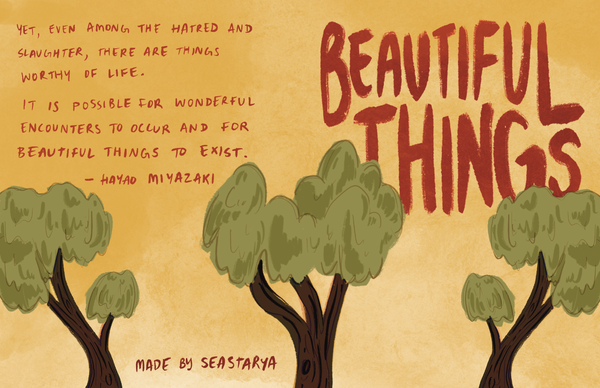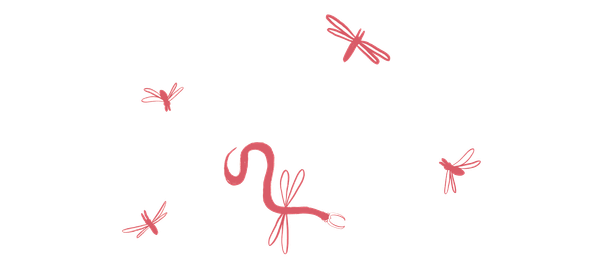there’s always a story in your backyard
an interview with wildlife photographer Vishal Subramanyan
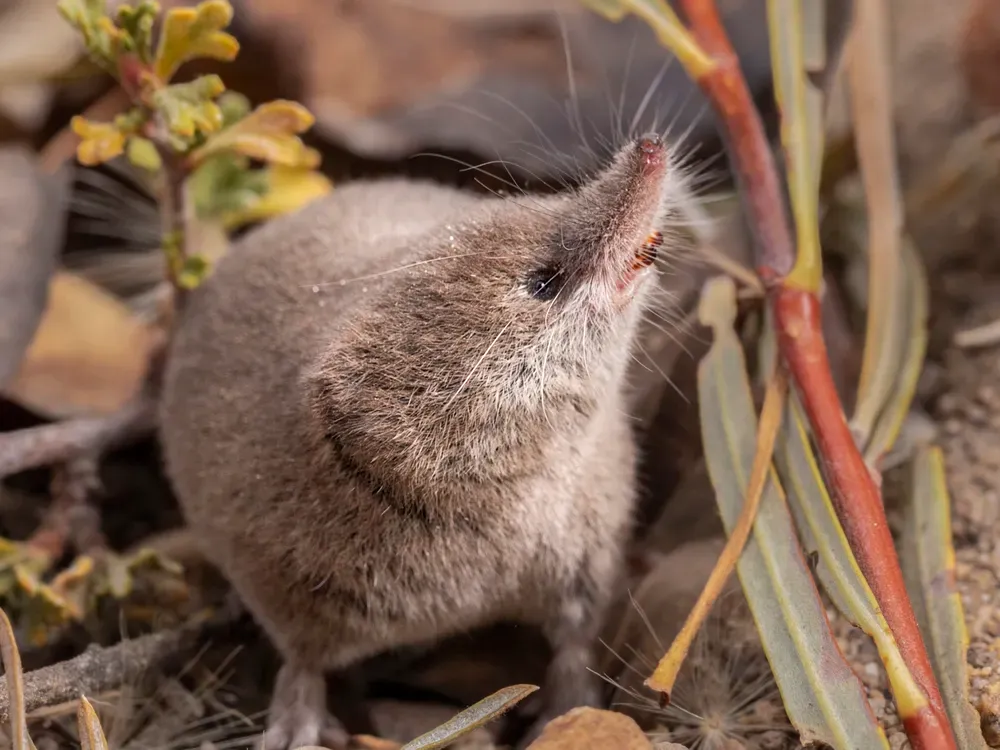
Vishal and I met in 2024 through the California Creators for Nature program. He’s a thoughtful and talented wildlife photographer with a particular love for local nature — everything from bobcat families in urban areas to tiny shrews in mountain ranges. We chatted about his photography philosophy, under-appreciated species, ethical practices, frozen toes, and more.
Thanks so much for taking time to catch up and share about your latest adventures, Vishal!
This interview has been lightly edited for flow and clarity.

ARYA: Thanks so much for joining me today. Can you share a bit about who you are and what you do?
VISHAL: Yeah, totally. My name is Vishal Subramanyan. I'm a recent graduate from UC Berkeley, and I'm a wildlife photographer and storyteller. In my work, I partner with conservation groups to tell stories about biodiversity and conservation, particularly in California.
ARYA: That's awesome. And what was it that brought you into this world of wildlife photography in the first place?
VISHAL: I'd always been really interested in nature from a young age. My family, particularly my dad, was really interested in camping, outdoor trips, things like that — so I had a lot of exposure to nature from a young age. In 2015, my dad and I went to Alaska, and when we were there, I borrowed his camera and took my first ever wildlife pictures. I sort of got hooked onto wildlife photography ever since, and for the last, like, nine years or so, I've been pursuing it in California.
ARYA: I love that. I know you’ve recently worked on a photography project featuring a very special shrew. Can you share a little bit about what that was like?
VISHAL: Yeah, it was kind of a spur-of-the-moment trip. My friend, Prakrit, and I were taking a Mammalogy Field Course together at UC Berkeley. As part of the course, we would go on field trips to study small mammals, document and record their measurements and behavior, things like that.
One of these trips was in the Sierra Nevada, and Prakrit had made a white background photo setup to get photos of the small mammals we caught, like voles and deer mice. So while everyone else was out tracking the rodents, we were photographing. We got some cool pictures of some voles, some deer mice, and we started to wonder … What else might we be able to do with this?
Later, after the trip, Prakrit had been doing some research and found out that there was one mammal species in California that had seemingly never been photographed alive — and that was the Mount Lyell shrew. It was first documented over 100 years ago, but it hasn't been documented in 20 years. It’s only been recorded like five, six times ever, and that too only as specimens. So Prakrit was like, “so, are we going to find this thing?” Those were his exact words. And I'm like, hell yeah we are!
But, we had a lot of work to do because the first snow was going to hit the area in November, and we couldn't access their high elevation eastern Sierra Nevada habitat once the snow hit. This all took place in late September, which gave us a one-month time frame. And in that time we needed funding, we needed permits, and we needed equipment.
I was fortunate enough to be part of the California Creators for Nature program, which had special project funding. My previous special project idea hadn’t worked (laughs), so I reached out about this one and that covered the funding portion. Then, we reached out to a professor of the Mammalogy course, who added us to his permit, which made things a lot faster. The permit still only finalized a few days beforehand, but it worked out.
And then, two out of the five people who ever have trapped the Mount Lyell shrew are [based] at the Museum of Vertebrate Zoology at UC Berkeley. So, they told us exactly where to go and gave us equipment. With all of that organized, we headed out for our field expedition in the first week of November. We were joined by Prakrit's friend, Harper, who's done work on scorpions with him in the past.
ARYA: I love how it literally took a village to photograph this shrew.
VISHAL: Yeah, it's funny you mentioned the whole “village” aspect of it — I’d never thought about it that way, but it’s true! A shrew photography trip requires multi-organizational collaboration.
“I feel like, at the moment, my services as a storyteller are better used to bringing attention to these kinds of creatures that we just don't think about as much but are still incredibly cool.”
When we headed out for the expedition, we arrived there that Friday evening and we immediately had, like, 150 traps to set out between the three of us. We worked along the stream corridor, where we each had our own transects.
Mount Lyell shrews — and all shrews — have incredibly fast metabolisms, meaning if they go for more than two hours at a time without eating, they'll die. In the past, when mammalogists have studied in these areas, they're not really particularly targeting shrews. They're often just trying to catch as many mammals as they can for their collections. So, they might set pitfall traps out overnight, and then by the next morning any small mammals caught will be probably dead [because of their need to eat every two hours]. Because of that, it's not even clear if the Mount Lyell shrew had ever even been seen alive, let alone photographed.
To combat this — because one, we didn't want to harm any shrews, and two, we also wanted to photograph and record their behavior — we would need to check the traps every two hours over the course of three nights … meaning we slept for about eight hours across those three nights and four days we spent there.
When we arrived, we immediately started setting out our traps, and before we even had the chance to put the bait in the traps, we already had two shrews caught. One of them we believed was the Mount Lyell shrew. As wildlife photographers, we like to say, “Oh, we waited until the last second and the animal finally appeared just as I was about to give up hope!” … Well, that was not the case here at all.
There's five shrew species living alongside one another in this area, and the Mount Lyell shrew looks pretty similar to some of them. We couldn’t confirm the identification until we ran genetics at Cal Academy weeks later, but with some subtle cues and what we know from past literature, we had a general idea of which were Mount Lyell shrews and which were other species. We caught 18 in total, and when we did get to run genetics, we were right on our initial identification of 16 of those. 6 were Mount Lyell shrews!
It was kind of like a go-go-go process because ... well, one, most of the activity was at night, so we had to stay up. And then when we had like a bunch of shrews trapped, we would photograph them, observe them alive, record data. This was like the first ever scientific data recorded of this species while they were alive, the first natural history information. We’d do that, and we’d release them, and by the time that was done we had more shrews! It was nonstop the whole time … and I got really cold. It got to like 15 degrees. I actually still don’t have feeling in one of my toes from the trip.
ARYA: (in disbelief) But it’s been months??!!!
BOTH: (nervous laughter)
VISHAL: I think it might be permanently damaged? It’s minor, just a feeling of constant numbness.
ARYA: Omg, I’m so sorry. Well … I guess you’ll never really stub your toe again?
VISHAL: Exactly! (laughs) I consider it an upside.
Anyways, the shrews were also incredibly difficult to photograph. They don't really sleep through the night — because of their incredibly fast metabolisms, they’ll be awake for a bit and forage, and they'll take these 30-second to 2-minute micro-naps throughout the day and night. Often, we’d get the photos right as they were waking up from a micro-nap. We had our white-background photo setup, which was a little easier to take photos on, but the natural background was just this open terrarium. It would take at least four hours sitting in front of the terrarium to get one photo of a shrew in a natural background because they just never stood still.
I will say like, overall, it was quite frankly miserable being out there — I think by the end we were all ready to go home — but the moments of excitement and wonder watching the shrews really helped us get through it. And I'll say advice I’d have on making a project like this possible would be to start right where you are. Like, all this was just because of a class, and just talking to our professors, showing interest. And I think also being present in the community you're in is a great way to make those connections.
ARYA: I really love that. Starting right where you are, right next to you. I also love that you're not sugar-coating the field experience.
VISHAL: Yeah. But it was an adventure, for sure.
ARYA: Would you say that this has been your most memorable photography field expedition?
VISHAL: I would say yeah, by far, because most of my photography is super local. Prakrit and Harper do crazy shit like this all the time (laughs), but for me, usually I'm going out for an evening and I'm back at home by dinnertime. They’ve done, like, 16-day desert expeditions where they'd just never sleep.
For me the hard part [of this expedition] was the lack of sleep and just like the constant, like, doing stuff. I think for them, the hard part was the cold because they're used to doing this in the desert. Oh, and the hard part for ME was ALSO the cold. So I had two hard parts, they had one hard part.
ARYA: (chuckles) Totally makes sense. I’d love to talk a bit about your approach to nature and conservation photography broadly — how do you think about the topics and timing of your photography work?
VISHAL: I think photography and storytelling are incredibly important ways to raise awareness and help the public foster connection with animals. Using the Mount Lyell Shrew as an example — before we went out and took these photos, pretty much no one knew this animal existed. For context, the climate change assessment done by UC Davis in 2015 shows that up to 90% percent of the species' range could disappear due to climate change by 2080. And like ... nobody's paying attention. Without photos or storytelling, the Mount Lyell shrew could have simply vanished and no one would have had any idea. No one would have been talking about it. But with a single photograph you can go from zero or a handful of people knowing about the species to like, literally millions of people. And that’s the first step to catalyzing conservation action.
“If you want to use your photography as a catalyst for change and to tell a powerful story, it’s about starting close to home and making those connections … no matter where you are, there’s always a story to tell.”
I also think part of the reason the shrew story in particular took off in the way it did is that it’s kind of a reprieve from all of the things going on in the world, a slight bit of wholesomeness in a terrible situation. I wouldn't say that I do nature photography to provide a reprieve from everything else — though it’s a nice side effect — because an important part of nature photography is also highlighting the threats. It’s not always fun and wholesome. And there’s of course a balance and a little bit of a challenge to sharing stories at the right moments. [When the shrew story was shared], I worried it was premature to post about it, but I think a lot of people really enjoyed it and it helped take their mind off [the news cycle]. It’s good to be careful about timing, and I also think the world can always use cute animals. That’s kind of the philosophy I’m trying to approach this with.
ARYA: Yeah, I really love that balance of delight with the need to understand that these creatures we share space with are as threatened by climate change as we humans are. I've heard over and over again from leaders in climate spaces that it’s critical to our futures to reimagine and rebuild our relationships with the nature around us. Has photography changed your relationship with nature?
VISHAL: Yeah, definitely. I would say photography has definitely helped me connect with nature on a much deeper level. It's helped me understand the animals I’m watching at a much deeper level. Honestly, it makes me want to be in nature more because it's like a scrapbook of my experiences in nature, in addition to being a tool to fight for nature. In those ways it’s only strengthened my connection with nature.
ARYA: That’s such a great point about it being a record of your own experiences. Are you a big iNaturalist user?
VISHAL: I'm not a big uploader, but I'm a big identifier. I spent a lot of time on the site. I'm honestly not sure why I don't upload a lot, but I do everything else that iNaturalist does. I learned about [the platform] after I started photography, and I actually used it to help me find a lot of places to look for animals.
ARYA: That's awesome. Kind of along those lines, do you have any additional tips for people looking to break into wildlife photography? I know we talked about connections and building networks and starting where you are — but what are the, like, tactical tips you’d share with people early in wildlife photography journeys?
VISHAL: I would say don't worry too much about camera equipment. Especially with how much camera technology is advancing. I think my main advice is really to start close to home.
I honestly think photography is a process of repetition. Like, shooting as much as possible, being close to home, and telling a story you resonate with. Obviously not everyone has the financial resources to go exploring abroad — but even if they did, I still think it would be a much better use of their time to photograph a story ten minutes from home. It’s one thing if you want to go experience those places, but if you want to use your photography as a catalyst for change and to tell a powerful story, it’s about starting close to home and making those connections. It’s also about visiting the same place, like, thirty times, which is maybe not something everybody wants to do but I think is a really important part of the process. I think you need to really feel those connections, and those connections start very close to home. No matter where you are, there’s always a story to tell.
ARYA: Totally. And I imagine the patience to visit the same place so many times over builds alongside that connection.
VISHAL: Exactly. Back to the Mount Lyell shrew as an example: California is like, one of the most well-studied, well-surveyed places in the world in terms of nature, and there was still a mammal that had never been photographed or possibly even seen alive. And that was like, four hours away from where I grew up in the heart of the Bay Area. There’s always a story in your backyard, if you just stop and take a closer look.
ARYA: I love that. I know your audience knows you for your really wonderful bobcat photos, and photos of other big, charismatic mammals. But I also love this new era of photographing some more under-appreciated, overlooked species that you’re in. Is there another species on the horizon that you have your eye on?
VISHAL: Yeah! It kind of started with the mountain beaver project I did. I was like wow, we discovered a lot right here in the Bay Area, and there was a lot of public fascination. And same with the shrew. [Part of the reason I’m interested in overlooked species is] for my own sense of curiosity and discovery — I love learning things. Every time I’ve gone out to look for something like a Mount Lyell shrew, I’ve learned something new that hasn’t been recorded before.
It’s also helped me realize that while I of course love the wolves, mountain lions, and bobcats — [photographing them] is basically my career now — there are already so many people working on those animals. But for something like a shrew, or a mountain beaver, or a tree vole, which is next on the horizon … as we know, the Mount Lyell shrew story was a logistical nightmare [to photograph], and so are a lot of similar species. And stories like that could easily go untold.
On a broader level, if we look at global patterns of biodiversity loss and which species are being most acutely impacted, it’s not the bigger charismatic species. They’re impacted, too, of course, but it’s often these smaller, more often overlooked species that are just disappearing under the radar, and nobody’s paying attention.
ARYA: Yeah. I feel like it’s a similar thing with insect populations struggling right now.
VISHAL: Right, exactly. I feel like, at the moment, my services as a storyteller are better used to bringing attention to these kinds of creatures that we just don't think about as much but are still incredibly cool. The next one we're working on with Cal Academy and trying to get some funding from other sources is … are you familiar with tree voles?
ARYA: No, but I desperately want to be, tell me everything please.
VISHAL: California has a genus called Arborimus, and two of the members of Arborimus are endemic to California. And they live entirely in trees. We’re talking 200, 300 feet up in Douglas fir trees. And they never come to the ground. They eat exclusively Douglas fir needles.
ARYA: What?! Like, they don’t even eat bugs or anything?
VISHAL: Yeah, it's a really cool animal. And nope, just Douglas fir needles. That's it. But I mean, as you can imagine, the species has been photographed just a few times, probably because you need to climb up 300 feet into a tree to photograph it. So, that's what we're working to organize now. I'm hoping to set a camera trap up in the tree.
Professionally, right now I’m working on these larger carnivores, but my hope is that over the next few years I can transition to working more on some of these smaller, more overlooked species, as long as I can find the funding … which is probably going to be the main struggle (laughs).
ARYA: That’s so exciting! And I absolutely believe in your ability to continue championing overlooked species for the foreseeable future.
VISHAL: I hope so, yeah. I think there's kind of a myth that maybe comes from the media community or the science journalism community where charismatic species are the best or only way to get a broader public engaged. But I think the Mount Lyell shrew is a perfect proof of concept that the public does care and is interested in these species, if we can just show them in the right way. I mean, this Mount Lyell shrew is covered in literally every single major news outlet like CNN, CBS, Fox News even ... (laughs) And we were actually around NPR’s “All Things Considered,” like, an hour ago. Clearly people care about these animals, so that gap can and should be filled in.
ARYA: Oh, huge congrats, that's so cool. So, it sounds like people can find and support your work pretty much anywhere on the internet right now (laughs) — but where’s a good place for them to get in touch and follow along with you?
VISHAL: Just my Instagram and my website, which are both just my name, Vishal Subramanyan.
ARYA: Amazing. And is there anything else on your mind that you want to share?
VISHAL: I do want to put a disclaimer: people should not typically be trapping animals for wildlife photography. I want to add the context that we were recording scientific information. Prakrit and Harper are both extraordinarily experienced biologists. We had all the necessary permits and support from two major scientific institutions. And we collected data that was really valuable for UC Berkeley's Museum of Vertebrate Zoology. Trapping and baiting should not be part of the wildlife photography process, and I definitely don't want to be encouraging people to be trapping and baiting animals, unless you have all the necessary permissions and you're providing valuable scientific information. Wildlife photography ethics are very important.
In the case of a shrew, there’s absolutely no way to get an image of a shrew if you're not going to trap and photograph it. It's literally impossible. And if your options are to have like zero images with this animal at all and to have some image — it's better to have some photos than to have no photos at all, as long as the permits and scientific backing are there. But it doesn’t mean wildlife photography should involve going out and trapping animals to photograph them regularly. We approached this project from a very science-based lens.
ARYA: Definitely, that’s fantastic. And finally, how do you feel after being interviewed by so many major outlets? Like, how are you doing on a Vishal-level?
VISHAL: (laughs) I'm good, I think I'm a little bored of interviewing now, but... Yeah.
(both laughing)
But I'm glad this has received so much press.
ARYA: The shrew is getting some major love! We love to see it. Well, thanks so much for making the time to chat and catch up — it’s been an absolute delight.

